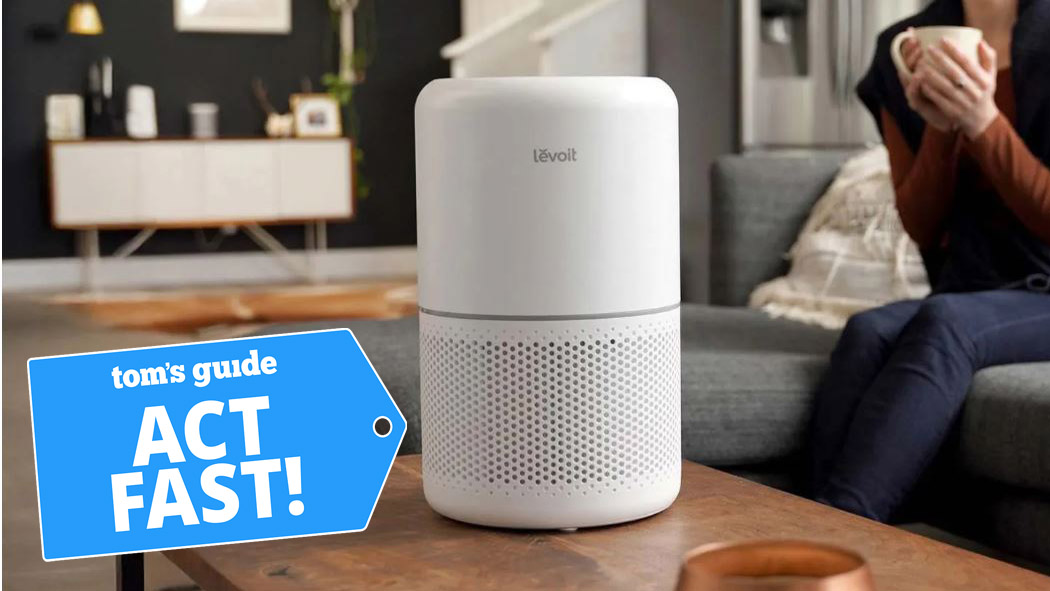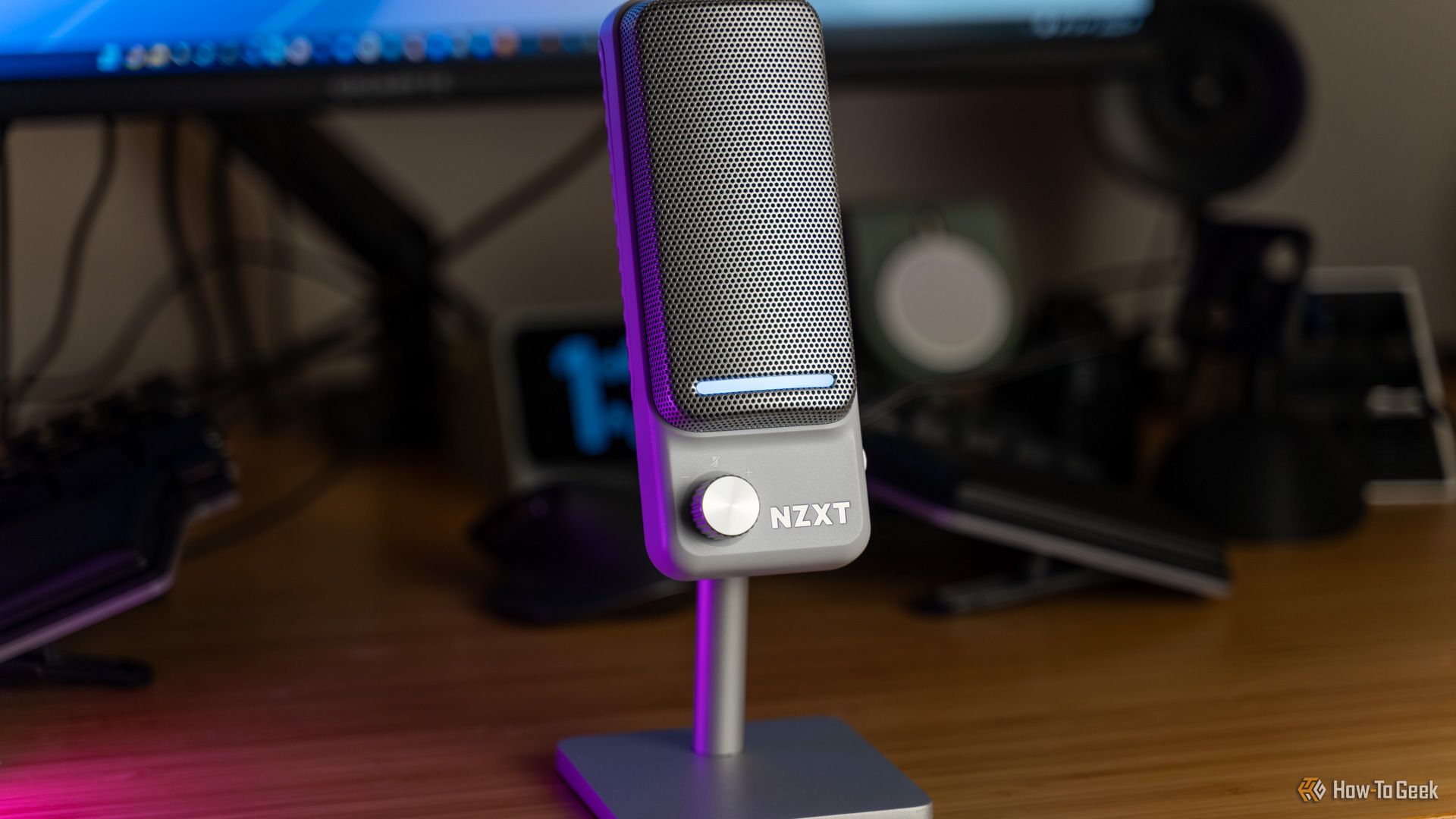Desktop-level performance in a compact format
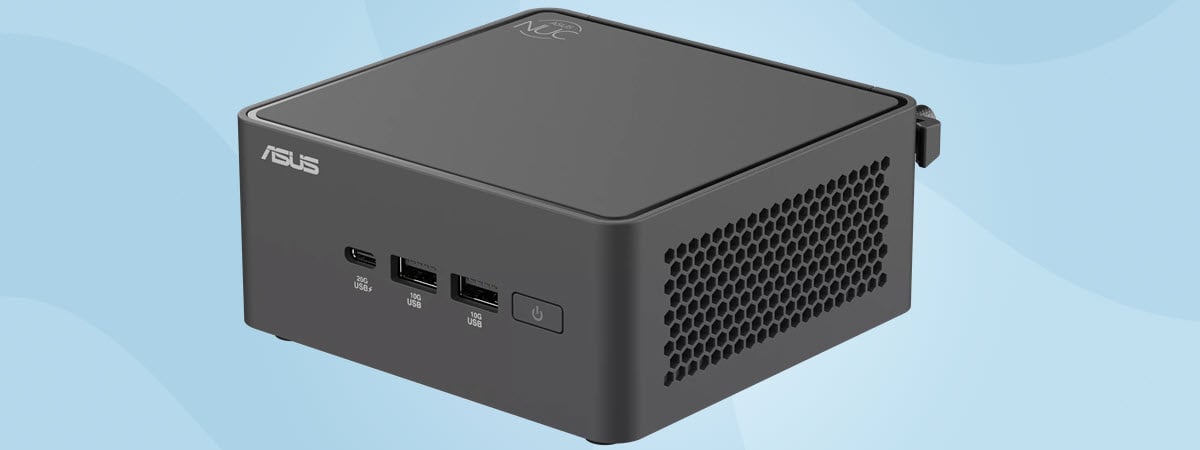
Small PCs have come a long way, and the ASUS NUC 15 Pro is proof that you don’t need a big desktop computer to get high performance. Designed for those who want a clean, clutter-free desk, as well as speed and some flexibility, this mini computer fits easily into any work environment. But don’t take my word for it, and check out this review for the ASUS NUC 15 Pro, which shares my real-life user experience in several workloads, as well as benchmark results that testify to its performance. If you’re curious whether a compact PC like this can keep up with your needs, read on:
ASUS NUC 15 Pro: Who is it good for?
The mini PC is an excellent choice for:
- Businesses and home users looking for excellent performance in a small form factor
- Professionals who appreciate modular design and easy upgradeability
- Users requiring diverse connectivity options such as Thunderbolt 4, HDMI 2.1, and 2.5Gb Ethernet
Pros and cons
Here are the strengths of the ASUS NUC 15 Pro:
- Solid, compact, and good build quality
- Outstanding CPU performance
- Excellent connectivity options
- Future-proof PCIe 5.0 storage support
- Tool-free chassis for easy hardware upgrades
- Modular expansion slots for added functionality (LAN, serial ports, or additional SSD)
- Quiet operation during typical use
As always, there are also some cons:
- Higher price compared to some competitors
- Noticeable fan noise and thermal constraints under heavy loads
Verdict
The ASUS NUC 15 Pro is surprisingly powerful for such a small computer. It offers excellent performance, plenty of ports, and a modular design that lets you upgrade key parts when needed. That makes it a good option if you’re planning to use it for a long time. Whether you need it for work or entertainment, it feels like a good buy. The only real downsides are the higher price and the fan noise in demanding workloads, but that’s common for compact PCs with this much power. If you want a small PC that combines speed, connectivity, and flexibility, the ASUS NUC 15 Pro is definitely worth considering.
Unboxing the ASUS NUC 15 Pro
The ASUS NUC 15 Pro arrives in a compact white box with a minimalist design. On the top and some of the sides of the box, there are photos of the device and texts explaining exactly what’s inside. The packaging is clean, simple, and professional, fitting for a mini PC aimed at both business users and enthusiasts.
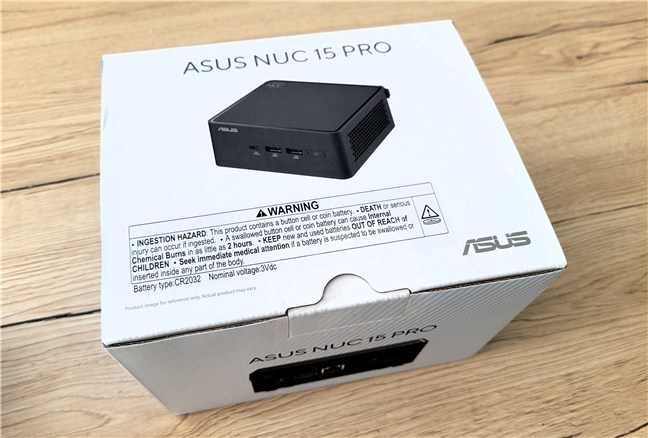
The packaging makes it clear that this mini PC is aimed mostly for business use
Opening the box, everything is neatly packed and easy to access. Inside, you find the mini PC itself, which is surprisingly small, alongside a sturdy power adapter and cable, a VESA mounting plate with screws (perfect if you want to attach the NUC to the back of a monitor or under a desk), and a small envelope with documentation and setup instructions.


The ASUS NUC 15 Pro comes with everything you need to get started
This is a no-frills package, but one that includes everything you need to get started. The device feels solid right out of the box, and the whole unboxing experience is straightforward.
NOTE: ASUS offers various configurations for the NUC 15 Pro. This review focuses specifically on the Intel Core Ultra 7 255H processor model with integrated Intel Arc 140T graphics. For other available configurations, visit the ASUS NUC 15 Pro webpage.
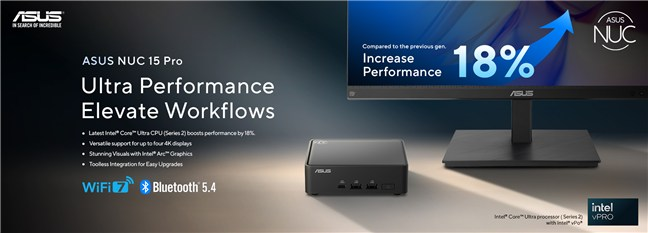

Introducing the ASUS NUC 15 Pro
Design and hardware specifications
The ASUS NUC 15 Pro (model NUC15CRH) keeps the compact form factor typical of the NUC line while delivering improved thermal handling and more powerful hardware options than the NUC 14 lineup. Measuring just 117 x 112 x 54 mm (4.61 x 4.41 x 2.13 inches) and weighing approximately 600 grams (1.32 pounds), the ASUS NUC 15 Pro is quite compact: about the size of a small paperback book, it can fit in the palm of your hand.
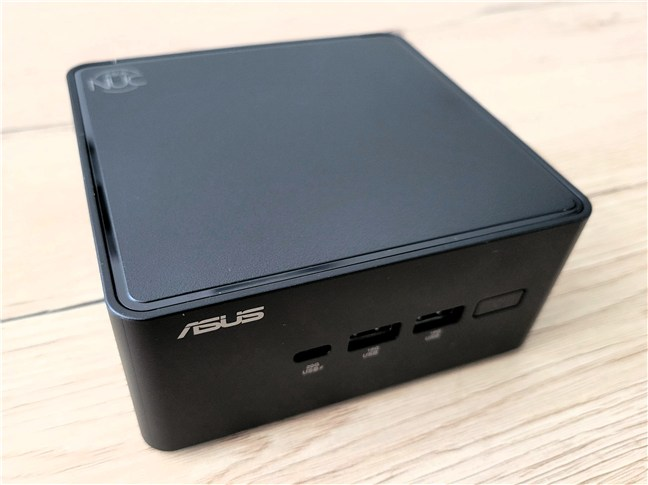

The ASUS NUC 15 Pro is small and compact
The black chassis has a minimalistic look, with a design aimed toward professionals. Cooling is handled via generous vents on the sides and rear, designed to keep the system cool under load.
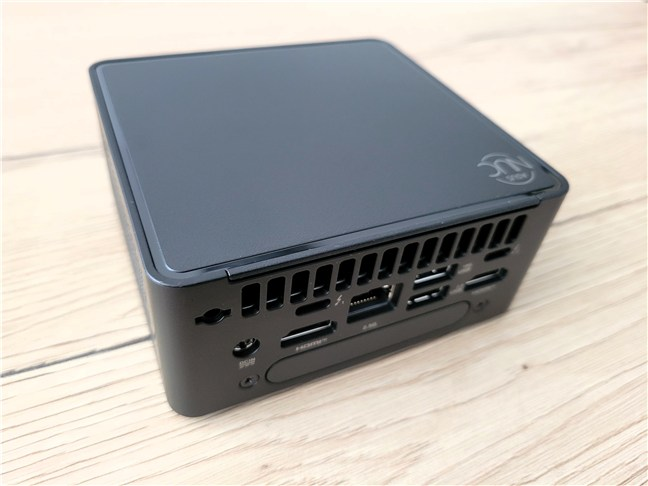

The design is understated; cooling seems a priority
Like other recent ASUS NUCs, it has a metal base cover that’s easy to remove if you need to upgrade the storage or memory.


The metal cover on the bottom can be easily removed
The front-facing ports include one USB 3.2 Gen 2×2 Type-C port, two USB 3.2 Gen 2 Type-A ports, and a Kensington lock slot on the side.
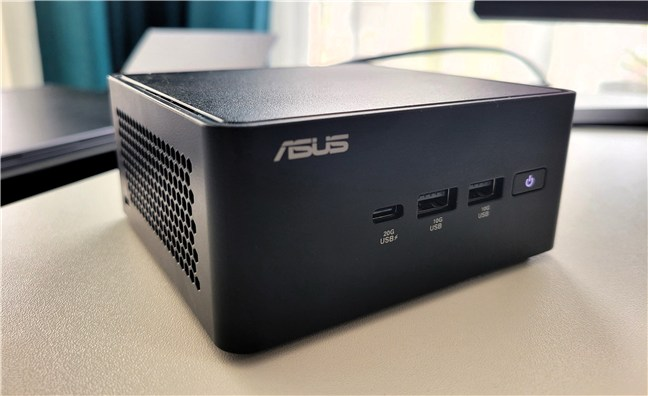

The ports on the front of the mini PC
On the back, there are two HDMI 2.1 ports capable of working in 4K resolution at 60 Hz, two Thunderbolt 4 ports (which support DisplayPort 2.1 and USB4), one USB 3.2 Gen 2 Type-A, one USB 2.0 port, and a 2.5G Ethernet port using Intel’s I226-V controller.
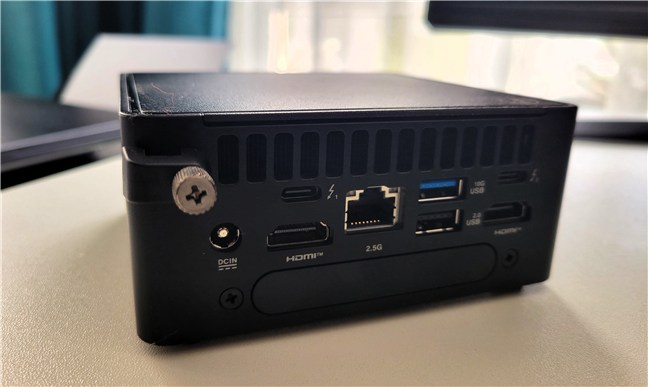

The ports and outputs on the back
The NUC 15 Pro is available in several configurations. My review unit came with the Intel Core Ultra 7 255H processor, which includes a total of sixteen cores. Six are performance cores, eight are efficient cores, and two are low-power efficient cores. The processor’s lowest running frequency gets as low as 700 MHz, while its maximum turbo frequency reaches up to 5.1 GHz. This processor also features integrated Intel Arc 140T graphics, making it capable of handling both professional tasks, light gaming scenarios, and tasks that require 3D rendering.
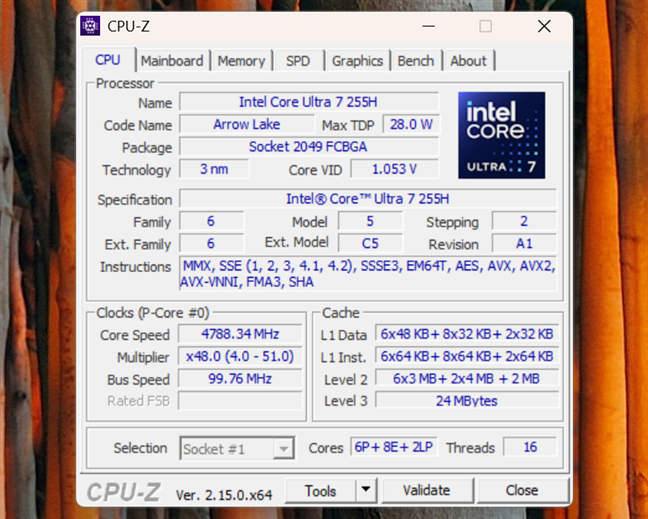

The sample I tested used an Intel Core Ultra 7 255H
You can install up to 48 GB of DDR5 RAM, and it works with two 5600 or 6400 MHz SO-DIMM DDR5 slots, depending on the module type, so future upgrades are possible. The review unit I had was equipped with 16 GB of DDR5-6400 RAM from Samsung.
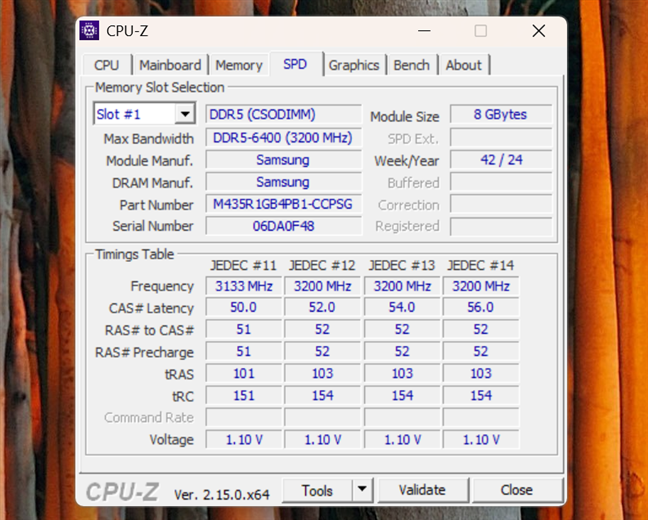

In the test unit, there was 16GB of DDR-6400 RAM
Storage is also highly configurable. The mini PC supports one M.2 2280 PCIe Gen 5 x4 SSD (for Intel Core Ultra CPUs) or Gen 4 x4 (for Intel Core CPUs), and a second M.2 2242 PCIe Gen 4 x4 SSD. My review sample featured a 1 TB Crucial PCIe Gen 4 x4 NVMe SSD, offering quick boot times and responsive performance during everyday use.
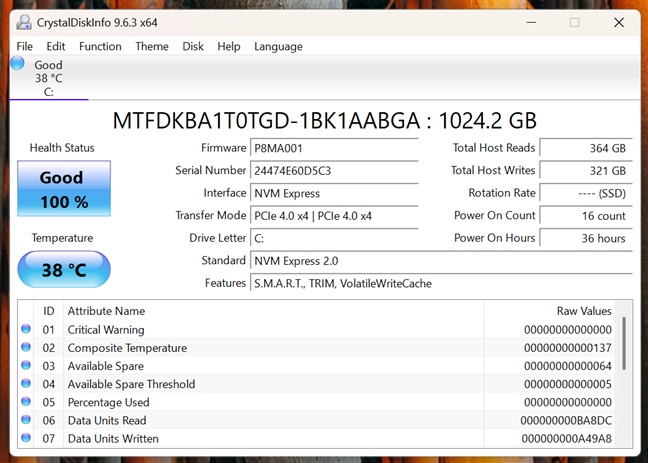

The drive in the sample unit was a 1TB Crucial running on PCIe 4 x4
Networking capabilities are excellent: the device includes a 2.5G Intel Ethernet Controller I226-V for fast wired connections. Wireless connectivity is handled by an Intel Wi-Fi 7 module (BE202) and Bluetooth 5.4, offering high speeds and excellent compatibility with modern peripherals.
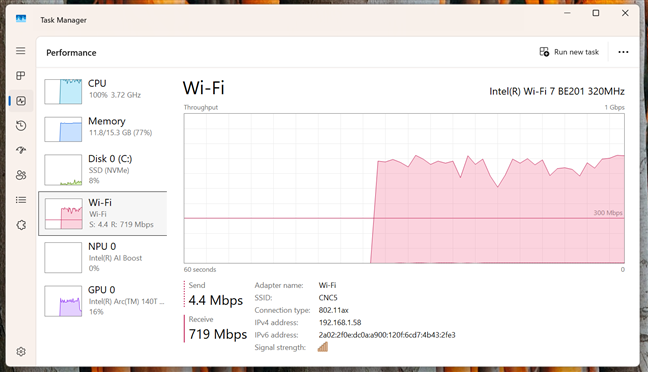

The mini PC comes with Wi-Fi 7
Because I tested the tall kit version of the ASUS NUC 15 Pro, the device also supports optional expansion accessories exclusive to this model. These include a second M.2 2280 SSD expansion accessory, a second 2.5GbE LAN port accessory, and a combined accessory offering both a second 2.5GbE LAN port and an RS232 serial port. These make the tall kit particularly interesting to users who need more connectivity or storage flexibility.
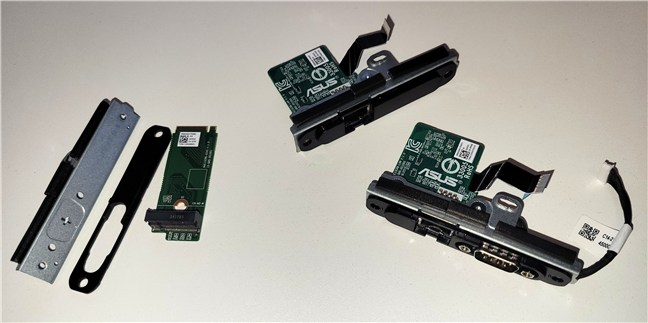

The add-ons available for the ASUS NUC 15 Pro add flexibility
Last but not least, a word about power: it comes from an external adapter capable of delivering up to 120 Watts. It’s fairly large and heavy, at least relative to the NUC chassis, but it should be able to provide all the necessary power, even when consumption spikes a lot due to heavy workloads.
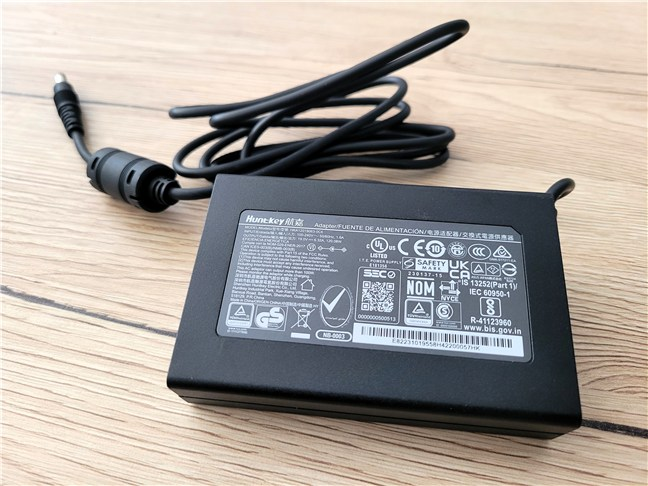

The power brick is fairly large and heavy
If you’d like to see the complete list of specifications, visit this page: ASUS NUC 15 Pro Tech Specs.
Overall, the ASUS NUC 15 Pro offers a pragmatic design and a strong set of hardware features. This is a compact PC that supports the latest Intel technology, including the latest Intel Core Ultra processors, integrated Arc graphics, dual high-speed storage, and Wi-Fi 7.
Using the ASUS NUC 15 Pro
After spending a full week with the ASUS NUC 15 Pro in my home office, I can honestly say it surprised me in all the right ways. Even though it’s small, it handled everything I needed with no trouble at all. Whether I was writing, browsing the web with tons of tabs open, hopping on video calls, or switching between apps, the NUC kept up and never slowed down.
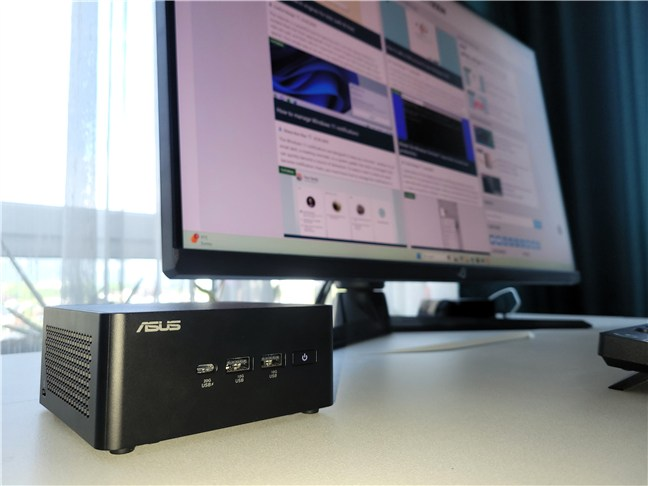

The ASUS NUC 15 Pro performs great in everyday activities
For regular daily work, it stayed quiet too. I barely noticed the fans unless I started doing something more demanding, like recording or converting videos. In those moments, the fan noise became more noticeable, but it wasn’t loud enough to be annoying. At a maximum of about 45 decibels, it was more of a hum in the background.
Although this isn’t a gaming PC, I still wanted to test it out. I chose Stray, a game I’ve been meaning to play for a couple of years now, and ran it at 1080p resolution with low graphical settings. The performance was actually better than I expected. Most of the time, it stayed between 50 and 60 frames per second, which made the game feel pretty smooth. There were a few hiccups in busy scenes, but nothing that made it unplayable. Lighter games should work even better, with steady frame rates and no issues at all.


Playing Stray on the ASUS NUC 15 Pro
This mini PC I’m reviewing includes Intel’s latest Core Ultra processor, which means it has built-in support for tasks powered by artificial intelligence (AI), like document summarization or live translation during video calls in multiple languages. In daily use, these features can help speed things up a bit and make certain tasks feel easier. However, it’s important to mention that the ASUS NUC 15 Pro is not advertised as a Copilot+ PC. It doesn’t meet Microsoft’s strict requirements for that label, which include a more powerful Neural Processing Unit (NPU) with a minimum of 40 TOPS (trillions of operations per second) for AI performance. That said, you can still access many AI features directly through Windows 11, and they work fine on this system.


While not exactly a Copilot+ PC, AI features work pretty well
One of the things I really liked about this NUC is how easy it is to upgrade. The version I tested (the taller chassis) lets you add a second NVMe SSD, and upgrading the RAM is simple. ASUS also gives you the option to add things like a second Ethernet port or even a serial port, which could come in handy for some people or businesses.
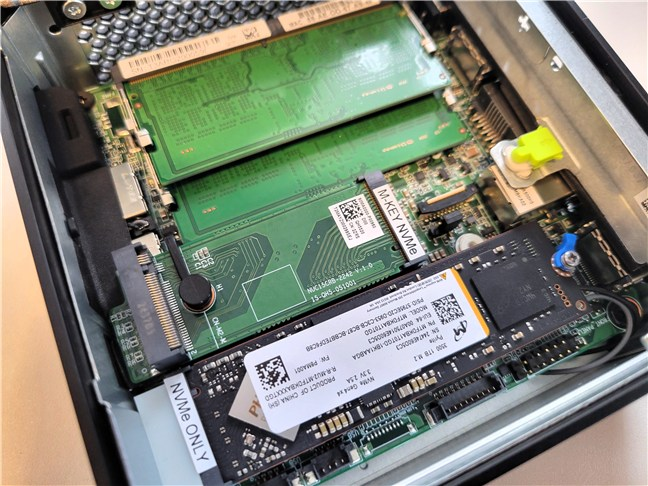

Upgrading memory, storage, or inserting any of the available Ethernet/serial add-ons is easy
The ASUS NUC 15 Pro is quick and versatile, with enough power for both work and media consumption. Well, even some light gaming. If you’re looking for a small PC that does a bit of everything, this one should be on your list.
Performance in benchmarks
Let’s see how the ASUS NUC 15 Pro performs in benchmarks. For a clearer comparison, I looked at the ASUS NUC 14 Pro+, which I reviewed previously, and ran the same tests on both mini PCs under similar conditions.
First, I measured boot times using BootRacer. The ASUS NUC 15 Pro took 19 seconds to load Windows 11, which is decent, but slightly behind the NUC 14 Pro+, which completed the same task in 17 seconds.
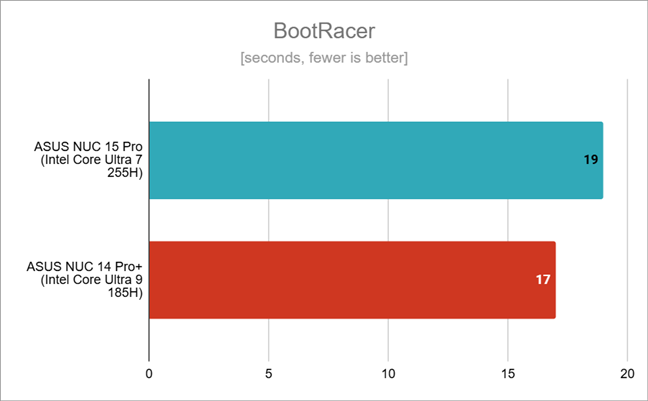

Boot times comparison
Next, I benchmarked the processor using CPU-Z. In the Single Thread test, the Intel Core Ultra 7 255H inside the NUC 15 Pro actually scored 833 points, making it 6.5% faster than the Core Ultra 9 185H in the NUC 14 Pro+ (782 points). This shows that, despite its name, the Ultra 7 chip performs better in lightly threaded tasks.
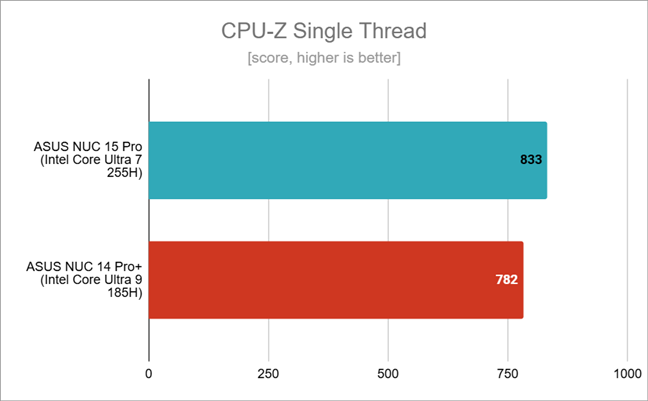

Benchmark results in CPU-Z Single Thread
However, things shifted in the Multi-Thread test. The NUC 15 Pro scored 8325 points, while the NUC 14 Pro+ reached 9085. That makes the latter around 9% faster in workloads that fully use all processor cores and threads.
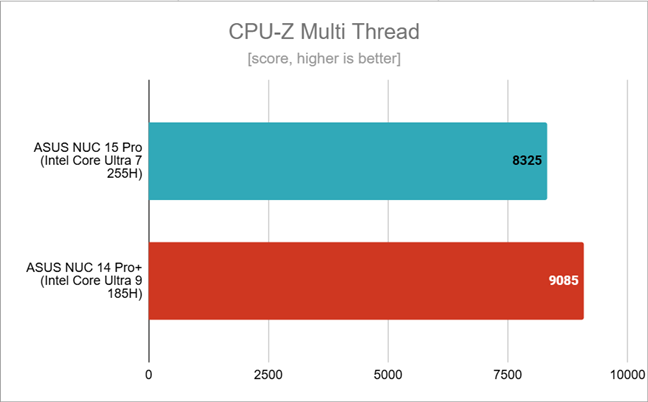

Benchmark results in CPU-Z Multi Thread
In Cinebench 2024, which evaluates rendering performance, the NUC 15 Pro scored 947 points. The NUC 14 Pro+ came out ahead with 996 points, offering about a 5% improvement.


Benchmark results in Cinebench 2024
Then, I used PCMark 10 to simulate everyday tasks like web browsing, video calls, and working with documents. The results were practically the same: 7175 for the NUC 15 Pro and 7152 for the NUC 14 Pro+. So in real-world use, you probably wouldn’t notice any difference in performance between the two.
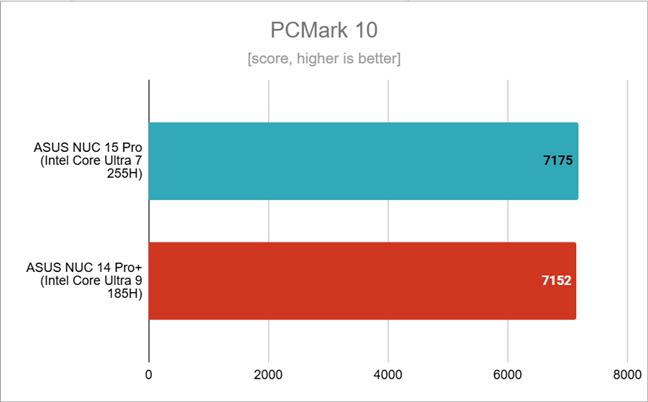

Benchmark results in PCMark 10
For web performance, I used JetStream 2 in Google Chrome. This test clearly favored the NUC 15 Pro, which scored 431 points, proving to be over 32% faster than the NUC 14 Pro+’s 325 points. If you do a lot of browser-based work or run web apps, this makes the newer NUC 15 Pro with its newer Intel processor a better choice.
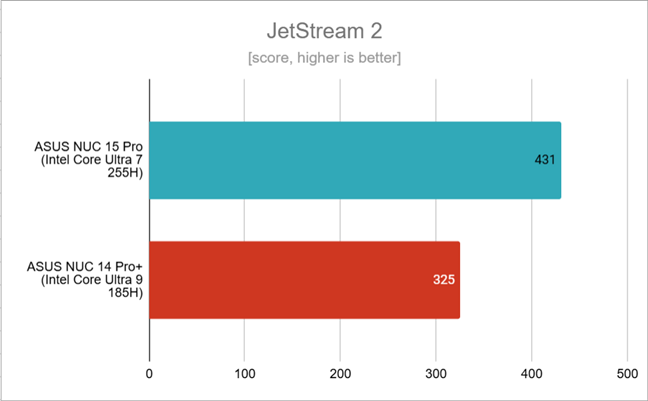

Benchmark results in JetStream 2
In 3DMark’s Time Spy graphics test, the NUC 15 Pro scored 3389 points, while the NUC 14 Pro+ did better at 3912. That’s a 15% lead in favor of the older model, probably thanks to the slightly higher GPU clock speeds of the Core Ultra 9.
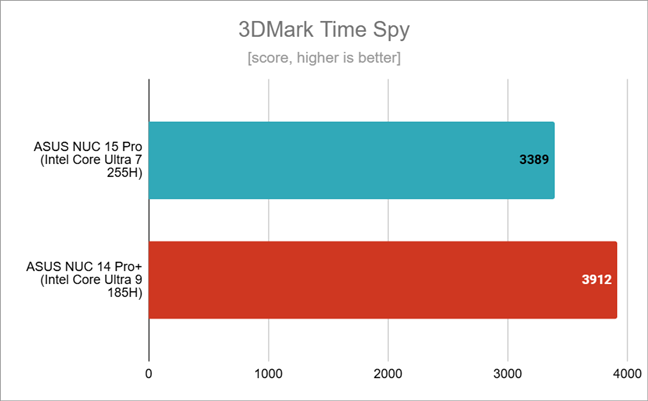

Benchmark results in 3DMark Time Spy
When it comes to temperatures, the CPU inside the NUC 15 Pro can reach up to 105 degrees Celsius. That’s slightly higher than the 101°C I recorded on the NUC 14 Pro+. I’ll admit, seeing that number was a bit scary for me. However, it looks like it’s still within the processor’s safe operating range, which officially goes up to 110°C. Even so, this feels like a hint that the cooling system in the newer unit is working harder, possibly running closer to its limits.
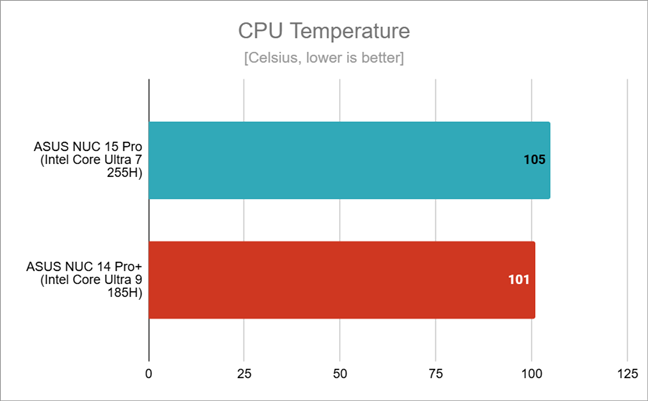

Maximum processor temperature recordings
Power efficiency is one area where the ASUS NUC 15 Pro proves to be great. Under full load, it drew just 90 watts from the wall, compared to 146 watts on the NUC 14 Pro+. That’s a difference of more than 60%. A big step forward, especially if you’re thinking about long-term energy use. Still, it’s not entirely surprising, given that the NUC 15 Pro uses a newer processor with fewer cores, which naturally helps keep power consumption lower.
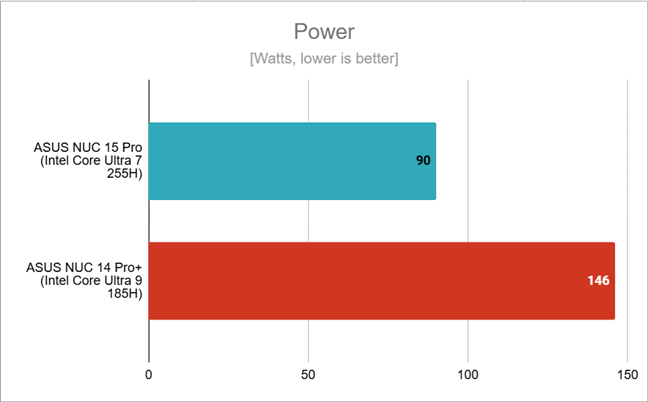

Total power consumption
The benchmark results show that the ASUS NUC 15 Pro balances good performance with excellent efficiency. It might not always be the fastest, especially in multithreaded or GPU-heavy tasks, but it does a great job in everyday workloads and web use, all while keeping power use low.
What’s your opinion about the ASUS NUC 15 Pro?
After using the ASUS NUC 15 Pro for a week, I really liked what it offered. It’s fast enough for everyday work, stays quiet most of the time, and doesn’t take up any space on my desk. It’s not the most powerful mini PC I’ve tested, but it’s one of the most efficient. It uses less power, and still gives you the option to upgrade later. If you want a small PC that gets the job done without any fuss, this one’s a great choice. Do you agree, or do you have another model or version in mind? Let me know in the comments section below.
Source link



